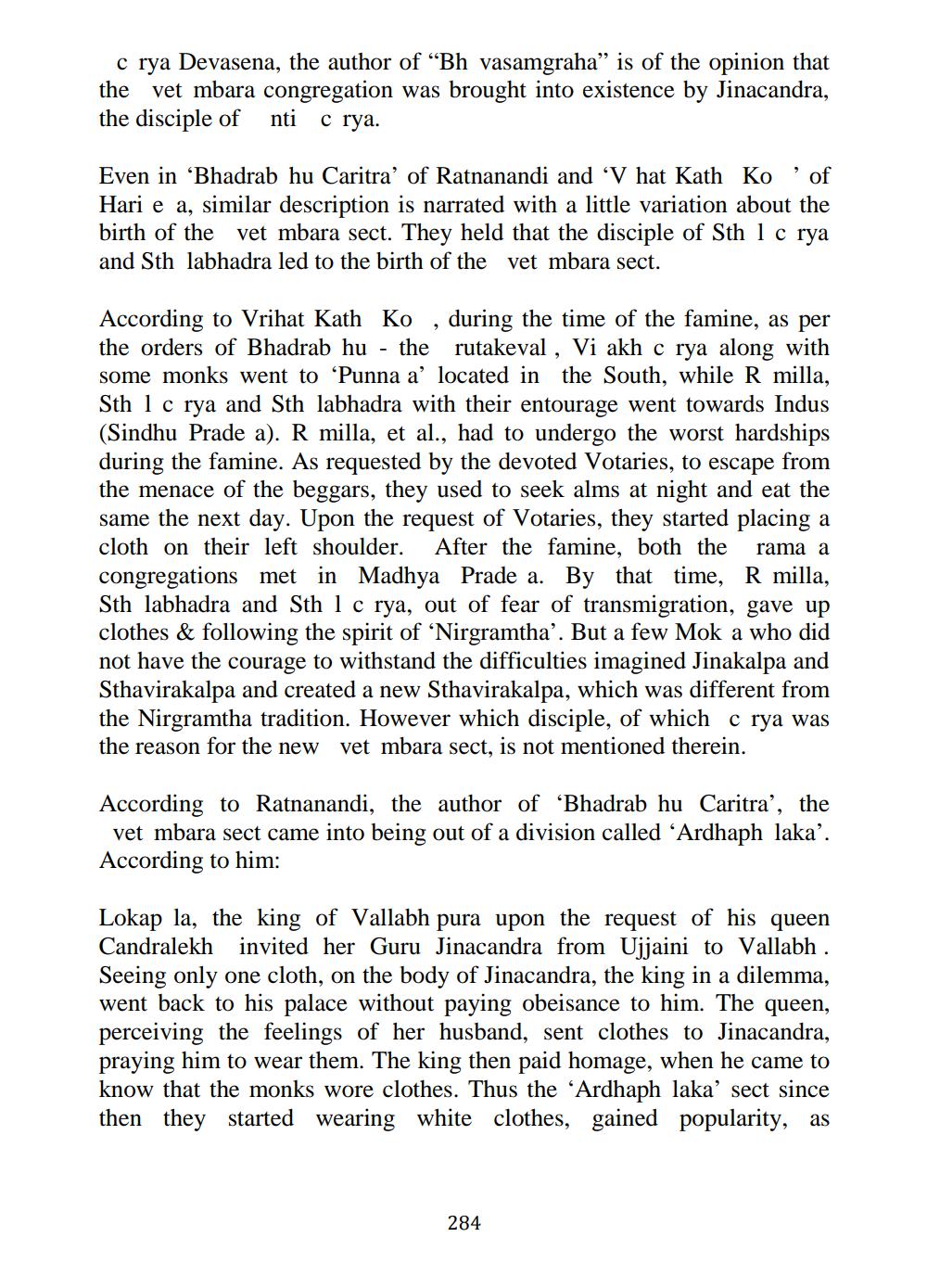________________
c rya Devasena, the author of "Bh vasamgraha” is of the opinion that the vet mbara congregation was brought into existence by Jinacandra, the disciple of nti c rya.
Even in 'Bhadrab hu Caritra' of Ratnanandi and 'V hat Kath Ko' of Hari e a, similar description is narrated with a little variation about the birth of the vet mbara sect. They held that the disciple of Sth 1 c rya and Sth labhadra led to the birth of the vet mbara sect.
According to Vrihat Kath Ko during the time of the famine, as per the orders of Bhadrab hu - the rutakeval, Vi akh c rya along with some monks went to 'Punna a' located in the South, while R milla, Sth 1 c rya and Sth labhadra with their entourage went towards Indus (Sindhu Prade a). R milla, et al., had to undergo the worst hardships during the famine. As requested by the devoted Votaries, to escape from the menace of the beggars, they used to seek alms at night and eat the same the next day. Upon the request of Votaries, they started placing a cloth on their left shoulder. After the famine, both the congregations met in Madhya Prade a. By that time, R milla, Sth labhadra and Sth 1 c rya, out of fear of transmigration, gave up clothes & following the spirit of 'Nirgramtha'. But a few Mok a who did not have the courage to withstand the difficulties imagined Jinakalpa and Sthavirakalpa and created a new Sthavirakalpa, which was different from the Nirgramtha tradition. However which disciple, of which c rya was the reason for the new vet mbara sect, is not mentioned therein.
rama a
"
According to Ratnanandi, the author of 'Bhadrab hu Caritra', the vet mbara sect came into being out of a division called 'Ardhaph laka'. According to him:
Lokap la, the king of Vallabh pura upon the request of his queen Candralekh invited her Guru Jinacandra from Ujjaini to Vallabh . Seeing only one cloth, on the body of Jinacandra, the king in a dilemma, went back to his palace without paying obeisance to him. The queen, perceiving the feelings of her husband, sent clothes to Jinacandra, praying him to wear them. The king then paid homage, when he came to know that the monks wore clothes. Thus the 'Ardhaph laka' sect since then they started wearing white clothes, gained popularity, as
284




